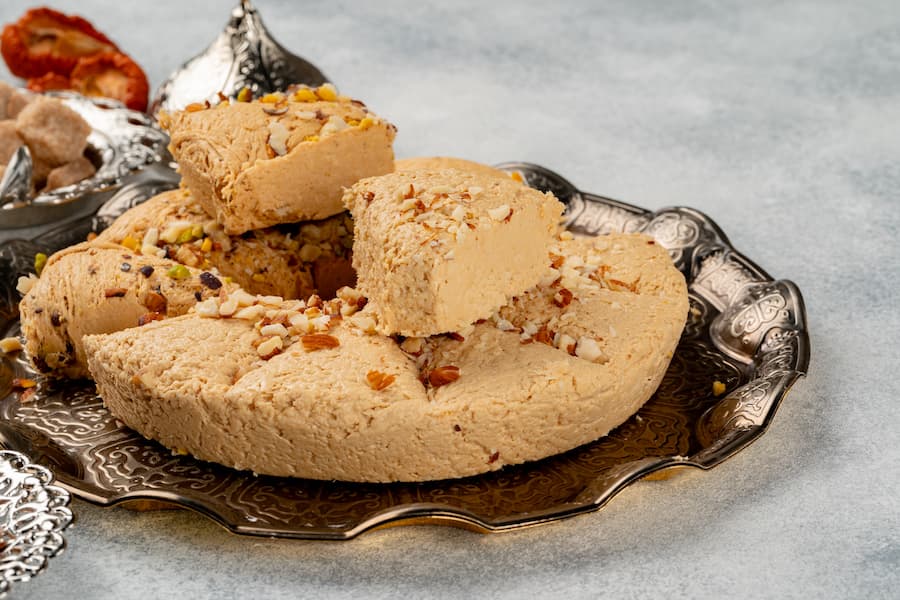What is halva? In fact, although halva is consumed in different forms in many countries, it is especially common in certain desserts in Turkey and the Middle East. There are three main types of halva: flour halva, semolina halva, and tahini halva. While flour and semolina halva are mostly prepared at home, tahini halva is usually purchased ready-made.
Halva is not only delicious but also a highly beneficial food for your body. It is known to help with many ailments. When consumed during the winter months, it acts as a great virus fighter against the flu. When eaten in moderation, it boosts energy and strengthens the immune system.
For school-age children or adults working in physically demanding jobs, halva is an important source of energy. Thanks to its high calcium content, it also helps prevent conditions such as osteoporosis. In addition, it has benefits such as reducing the risk of cancer, treating iron deficiency, protecting skin and hair health, providing the protein our body needs, and positively affecting kidney health.
In addition to its many benefits, halva can also have harmful effects for people with certain illnesses or those who consume it excessively. Diabetic patients should be cautious when eating halva. Overconsumption may trigger the disease and cause health problems. Therefore, it should either be consumed under medical supervision or avoided altogether to prevent risks.
Furthermore, people who have issues with protein consumption should be equally careful. Although halva provides many benefits with its protein content, it can be dangerous for individuals with protein-related health conditions. While the consumption amount may not be very critical for young people and adults, the elderly should be cautious when eating halva. Excessive consumption can negatively affect health and lead to illnesses.
Experts often state that tahini halva is beneficial for many illnesses. Tahini is a highly effective food for both your physical appearance and overall health. If you are experiencing hair loss or skin problems, consuming tahini halva can be very beneficial. Tahini helps prevent hair loss, gives brightness to the skin, and revitalizes it.
In addition to all these, it is particularly effective against vascular blockages that occur during menopause, helps prevent osteoporosis, removes accumulated toxins from the body, alleviates migraine attacks, lowers high blood pressure, slows the progression of Alzheimer’s disease, and is good for eczema. As can be seen, tahini and tahini halva provide significant benefits against various illnesses.
The basic ingredients needed to make flour halva are flour, sugar, oil, and water. To make semolina halva, you need semolina, oil, water, milk, and sugar. If you want to enhance the flavor of your halva, using corn syrup in your recipes is a good option. This will soften the texture of the dessert and enrich its flavor. In both recipes, you can substitute molasses or honey for sugar. In this way, the halva you prepare will be healthier. Additionally, it is also possible to make sugar-free halva without using any sugar at all.
Since tahini halva is not usually made at home, many people wonder how it is produced. In recent years, the growing use of machines has made preparing tahini halva easier and faster. With the help of halva boiling, sugar boiling, halva kneading, halva weighing, and halva cutting machines, the production process of tahini halva has gradually begun to become mechanized.

Tahini halva can be prepared both at home and in factories, but cutting it properly after production can be quite difficult. When made at home for family consumption, cutting it neatly is not so important; however, especially in funerals, large gatherings, or factory production, cutting tahini halva piece by piece by hand takes a lot of time. In such cases, a halva cutting machine provides great convenience. With a halva cutting machine, you can cut tahini halva ranging from 200 grams to 2 kilograms into the portion sizes you want. This maximizes efficiency and eliminates the need for cutting each piece by hand.